SUMMARY
This is AI generated summarization, which may have errors. For context, always refer to the full article.
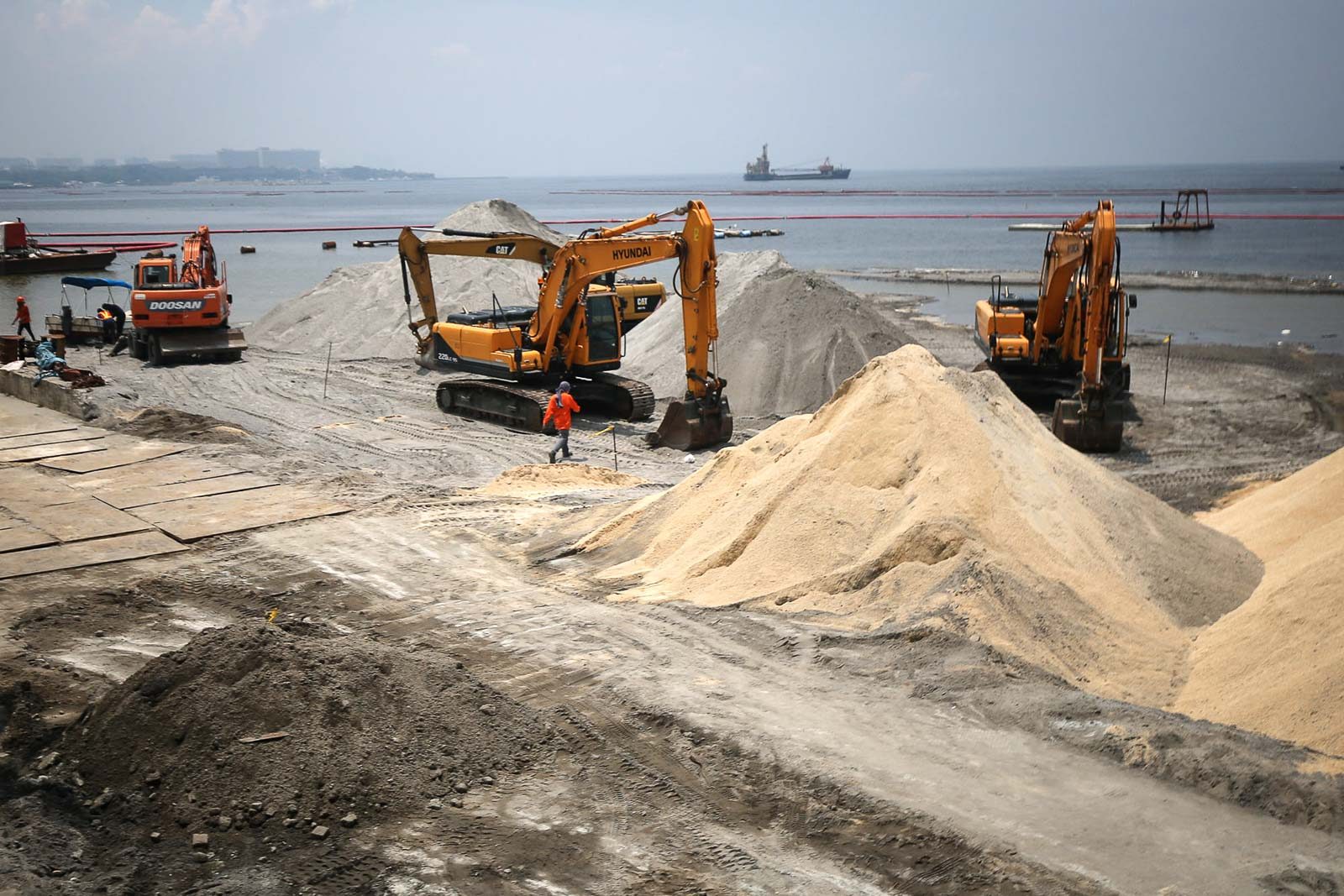
The chairman of the Cebu provincial board’s environment committee said Friday, September 4, that no permit was issued for the extraction or transport of the dolemite used for the sand being dumped just off Manila Bay.
“As far as the Cebu provincial government is concerned, wala pay naissue nga permit (no permit was issued) for that. We’re still waiting for the Mines and Geoscience Bureau (MGB) to produce said permits,” 3rd District Board Member John Ismael Borgonia told Rappler in a phone interview.
Borgonia said that they have asked the Provincial Environment and Natural Resources Office (PENRO) to investigate the issue.
P400 million for Baywalk rehab
Meanwhile, a non-governmental organization which monitors government infrastructure projects said the white sand project of Manila Bay is both costly and a health hazard.
Terry Ridon, convenor of Infrawatch PH, said the approved budget of the Manila Bay Rehabilitation Program (Baywalk area) was P397.897 million. He added that roughly cost about P795,000 per meter of rehabilitating the Manila Baywalk.
On top of that, prolonged exposure to dolomite may cause cancer, lung failure, and other serious illnesses, he said.
Cebu board member Borgonia said: “While the investigation is undergoing, we assume that DENR is not guilty of anything as the application may have been done through their own branch at the Mines and Geosciences Bureau.”
The controversy started when social media lit up after concerned netizens reported white sand being dumped in Manila Bay to enhance the view along the baywalk.
Critics slammed the project for being unnecessary and possibly harmful to the shoreline of Manila Bay.
It was Department of Environment and Natural Resources Undersecretary Benny Antiporda who first said the sand was synthetic – made from crushed dolemite imported from Cebu.
Cebu City Councilor Joel Garganera, who chairs Cebu City’s environment committee, said he too wanted know where in Cebu did the minerals come from and who issued the permit, according to a Cebu Daily News report.
While most mines are outside Cebu City, which is independent of the province, there is mining activity in the city’s mountain barangays – which make up more than half of the city’s land area.
The Department of Environment and Natural Resources Central Visayas office also said it did not issue a permit for the extraction of minerals.
Environmental lawyer Liza Osorio told Rappler in a phone interview that the extraction of minerals, including gravel and sand, are under the jurisdiction of the province’s regulatory board for areas of up to 5 hectares.
“The investigation should include the permit if it was carried by the contractors,” Osorio added.
When it exceeds these areas, then the Mining and Geosciences Bureau would be responsible for issuing the permits.
Environmental damage
The Cebu City government will meet with officials from DENR-Central Visayas on Saturday, September 5, to further discuss developments and investigate illegal quarrying activities in the mountainous area of the city.
Ridon said it was imperative that the DENR should disclose the total cost of the purchase of dolomite sand, to assure the public that there was no overpricing.
“Fake white sand on Manila Bay looks like a very expensive, unnecessary cosmetic intervention along such a small stretch of its 190-kilometer coastline. AndWorse, this poses as a significant health hazard at a time when our healthcare system is already overheating,” said Ridon.
Advocacy group Oceana Philippines also called out the project saying that it may harm the natural ecosystem and coastal integrity of Manila Bay.
National fishers group Pambansang Lakas ng Kilusang Mamamalakaya ng Pilipinas (PAMALAKAYA) also noted the potential environmental harm brought about by the project.
“Dolomite contains a high amount of heavy metals such as aluminum, lead, and mercury, which would contribute to the pollution and acidity of Manila Bay,” it said.
“These synthetic materials can easily contaminate Manila Bay when a heavy rainfall washes them away from the shore, tainting the already polluted water and endangering the fishery resources,” the group added.
Why not mangrove restoration?
Youth environmental group Wavefarers called on the DENR to focus its time and resources on restoring the local ecosystem. A good example is mangrove restoration, the group said.
Manila Bay was once filled with mangrove forests, seagrass beds, tidal flats, and coral reefs. Now only patches of these are found in the area and are threatened by reclamation projects.
Wavefarers said mangroves would have have actual long-term benefits compared to superficial solutions like white-sanding Manila Bay.
“Mangrove trees can help restore the bay because these are known to filter and store metals, which help keep coastal waters clean and safe for humans and other species,” the group said.
Wavefarer executive director Charisse Reganion said that it was not the first time the government had carried out projects that neglect the environment and ignore science, adding that the visual appeal of Manila Bay will mean nothing if the bay’s ecosystems and communities continue to get destroyed by negligent operations.
Instead of trying to “embellish” Manila Bay, the government should look into efforts with actual long-term impacts that benefit the environment and the people, Wavefarers said.
PAMALAKAYA and Wavefarers are working on a campaign against massive reclamation activities across Manila Bay, and for the protection of fishing communities against displacement and conversion projects.
“The fishing people of Manila Bay don’t need synthetic white sand, but authentic rehabilitation that would restore its abundant ecosystems and fishing resources for the benefit of the Filipinos,” PAMALAKAYA and Wavefarers said in a joint statement. – with a report from Mavic Conde/Rappler.com
Editor’s Note: A previous version of this story said extraction of minerals in areas up to 5,000 hectares is under the jurisdiction of the provincial government. Liza Osorio clarified this should be 5 hectares.
Add a comment
How does this make you feel?
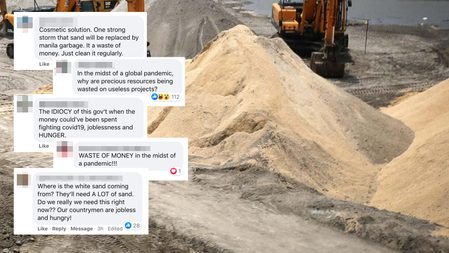

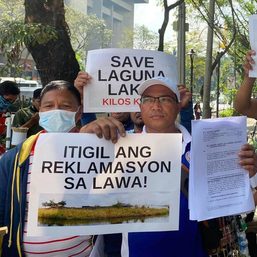
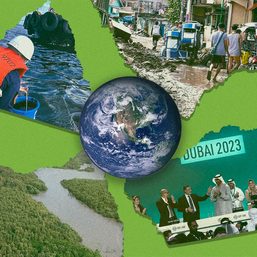
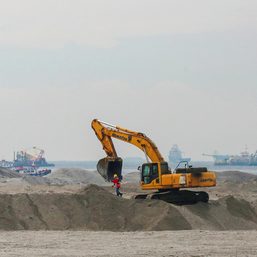
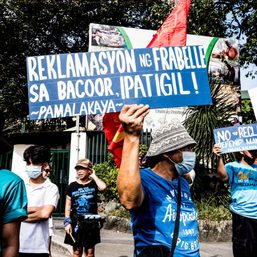
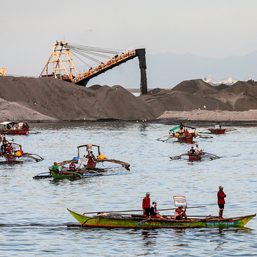
There are no comments yet. Add your comment to start the conversation.